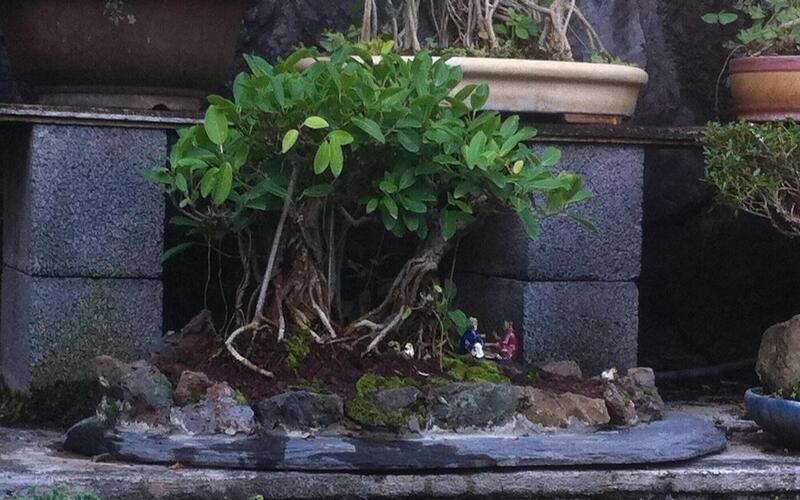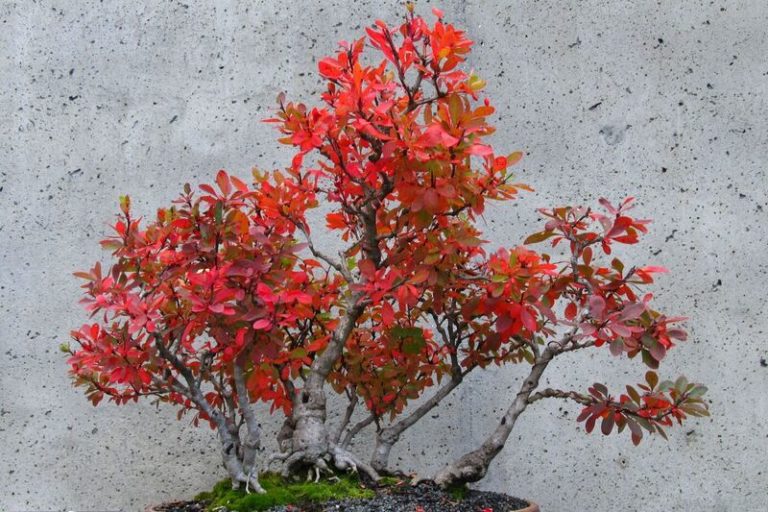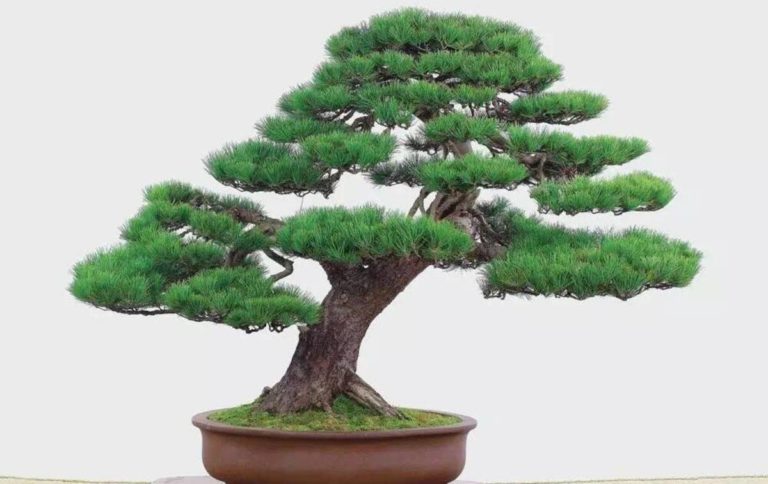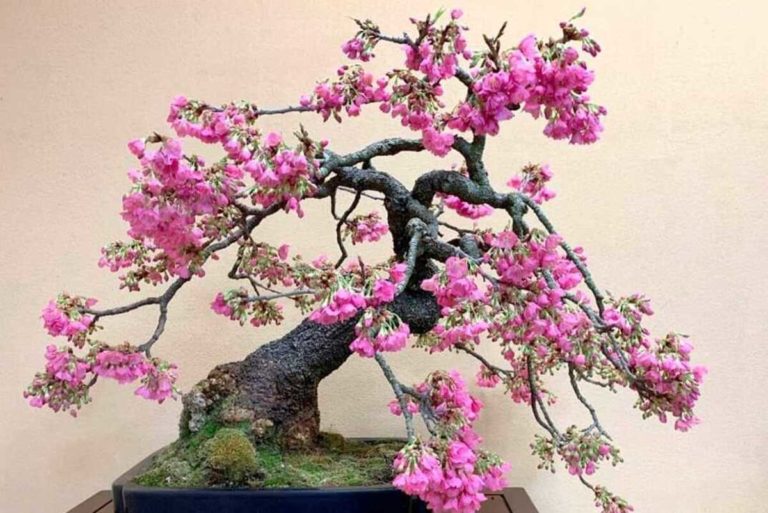Banyan Bonsai: A Marvel of Nature and a Masterpiece of Art
Banyan Bonsai is a unique and attractive form of bonsai tree that is famous among gardening lovers. This page will cover all you need to know about Banyan Bonsai, including its history, features, maintenance, popular species, and landscape applications.
What is Banyan Bonsai?
Banyan bonsai are miniature versions of the original Banyan tree. Banyan trees are fig trees indigenous to India, Pakistan, and Bangladesh. It is known for its aerial roots that grow down from its branches and take root in the ground, creating new trunks and creating a unique and striking appearance. Banyan Bonsai is a miniature version of the Banyan tree that has been trained to develop in a pot, making it an excellent asset to any interior or outdoor garden.
History and Origin of Banyan Bonsai
For generations, people have relied on the banyan tree’s therapeutic benefits and its usage as a food source for both people and animals. It is commonly found in temples and other religious buildings and has also been considered a sign of eternal life. With more than a thousand years of bonsai tree cultivation, China is where Banyan Bonsai initially emerged. The rest of the globe, including Japan, caught wind of it from there.
Types of Banyan Bonsai
Banyan bonsai trees come in a few varieties, and each has its own special qualities. Some examples of common Banyan Bonsai styles are shown below:
- Ficus Microcarpa: It is one of the most popular Banyan Bonsai species. It is also known as Chinese Banyan. It has tiny, dark green leaves and aerial roots that emerge from the branches, giving it a distinctive and eye-catching look.
- Ficus Benghalensis: It is a huge Banyan tree that may grow up to 100 feet tall in the wild and is also known as Indian Banyan. It has huge, oval-shaped leaves and aerial roots that grow down to the ground and take root.
- Ficus Retusa: Also known as Cuban Laurel, it is a popular Banyan Bonsai species with small, round leaves and a thick, twisting trunk. It is easy to care for and can be shaped into different styles.
- Ficus Benjamina: Also known as Weeping Fig, it is a popular indoor Banyan Bonsai species with small, glossy leaves and a slender trunk. It is easy to care for and can grow up to several feet tall.
- Ficus Panda: Also known as Panda Plant, it is a small Banyan Bonsai species with tiny, round leaves and a dense, bushy growth habit. It is an excellent choice for small gardens or indoor spaces.
- Ficus Ginseng: Also known as Ginseng Fig, it is a unique Banyan Bonsai species with a thick, bulbous trunk and small, dark green leaves. It is easy to care for and can be trained into different styles.
Each species of Banyan Bonsai has its own distinctive characteristics and traits, making them ideal for any garden or indoor location. Choose the option that best meets your requirements and preferences, and appreciate the majesty of this distinctive and striking plant.
Banyan Bonsai and Its Symbolism
Not only is the Banyan Bonsai an attractive plant, but it is also symbolic in numerous cultures and religions. Here are some of the significance and symbolism of Banyan Bonsai:
Endurance: Banyan Bonsai is a sign of strength and endurance because it can grow and do well even in difficult situations. It is also known to live for hundreds of years, which makes it a sign of staying strong and living long.
Unity: The Banyan tree is known for its aerial roots that grow down from its branches and take root in the ground, creating new trunks and connecting the trees. This makes it a symbol of unity and interconnectedness.
Spirituality: In many countries and religions, banyan bonsai is seen as a holy plant. It is often found in churches, shrines, and other holy places because people think it has magical energy.
Protection: In many cultures, Banyan Bonsai is seen as a protective plant that can ward off negative energies and evil spirits.
Growth and renewal: Banyan Bonsai is a symbol of growth and renewal as it sheds its leaves and grows new ones throughout the year. It is also a symbol of regeneration and new beginnings.
Overall, Banyan Bonsai holds significant symbolism in various cultures and religions. Its endurance, unity, spirituality, protection, growth, and renewal make it a meaningful and powerful symbol that can inspire and uplift those who cultivate and care for it.
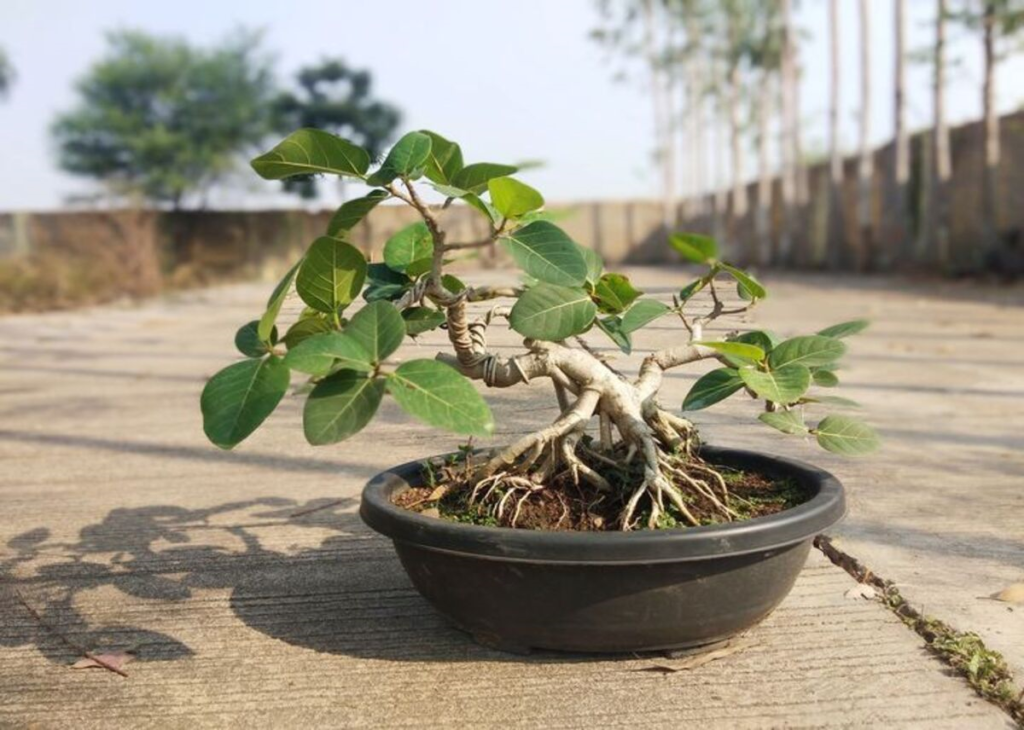
Characteristics of Banyan Bonsai
Banyan Bonsai is a unique and lovely plant with various different traits that make it a favorite option among bonsai aficionados. Here are some of the essential qualities of Banyan Bonsai:
- Aerial roots: The aerial roots of Banyan Bonsai are one of its most distinguishing characteristics. These roots develop from the tree’s branches and trunk and dangle down, giving it a distinct and eye-catching look.
- Thick trunks: Banyan Bonsai trees have thick, gnarled trunks that give them a mature and ancient look. The trunks can be shaped and twisted into different forms, creating a unique and personalized bonsai.
- Small leaves: Banyan Bonsai has small, glossy leaves that are often oval-shaped or round. The leaves are typically dark green and can add a beautiful contrast to the aerial roots and trunk.
- Easy to care for: Banyan Bonsai is relatively easy to care for and can tolerate a range of growing conditions. It prefers bright, indirect light and moderate humidity, but it can also thrive in lower light and drier conditions.
- Long lifespan: Banyan Bonsai may thrive in the wild for hundreds of years, giving them a symbol of perseverance and longevity. They may live for several decades as bonsai if properly cared for.
- Symbolism: Banyan Bonsai holds significant symbolism in various cultures and religions, making it a meaningful and powerful plant to cultivate and care for.
Overall, Banyan Bonsai is a beautiful and unique plant with several distinct characteristics that make it a popular choice for bonsai enthusiasts. Its aerial roots, thick trunks, small leaves, easy care requirements, long lifespan, and symbolism all contribute to its appeal and beauty.
How to Grow Banyan Bonsai?
Growing Banyan Bonsai can be a rewarding and enjoyable experience. Here are some steps to follow for growing Banyan Bonsai:
- Choose a suitable pot: Banyan Bonsai prefers shallow pots with good drainage. Choose a pot that is slightly larger than the tree’s root ball and has several drainage holes.
- Prepare the soil: Banyan Bonsai prefers well-draining soil rich of organic and inorganic elements. Mix equal quantities peat moss, perlite, and coarse sand to make a good soil mix.
- Watering: Watering Banyan Bonsai is necessary on a regular basis, but it must not be overwatered. Water the tree when the top layer of soil feels dry to the touch. To minimize disturbing the soil, use a watering can or a hose with a tiny spray nozzle.
- Light: Banyan Bonsai prefers bright, indirect light but can also tolerate lower light levels. Place the tree in a location that receives bright light for at least six hours a day, but avoid direct sunlight as it can scorch the leaves.
- Fertilizing: Banyan Bonsai should be fertilized every two weeks during the growing season with a balanced fertilizer. It is best to dilute the fertilizer to half the recommended strength to avoid burning the roots.
- Pruning: Prune Banyan Bonsai regularly to maintain its shape and size. Pinch back new growth to encourage branching and shape the tree’s foliage to achieve the desired look.
- Repotting: Banyan Bonsai should be repotted every two to three years to refresh the soil and promote healthy root growth. Repot the tree in the spring when it is actively growing, and prune back any excessively long roots.
Overall, growing a Banyan Bonsai takes patience, care, and attention to detail. By following these steps, you can enjoy the beauty and uniqueness of this amazing plant for many years to come.
Benefit of Banyan Bonsai
Growing Banyan Bonsai can offer several benefits, including:
Stress relief: Bonsai growing has been demonstrated to alleviate stress and have a relaxing impact on the psyche. Caring for Banyan Bonsai may be a relaxing and soothing pastime that can improve one’s general well-being.
Aesthetic appeal: Banyan Bonsai is a gorgeous and unusual plant that may offer a touch of nature and beauty to any indoor or outdoor location.
Air purification: Like many other plants, Banyan Bonsai can help purify the air by removing harmful pollutants and toxins from the environment.
Educational experience: Growing Banyan Bonsai may be an educational experience, letting you to learn about the plant’s history, symbolism, and cultural value.
Longevity: Banyan Bonsai can live for several decades if properly cared for, providing a long-lasting and rewarding hobby.
Environmental impact: Growing Banyan Bonsai can contribute to environmental conservation efforts by promoting plant cultivation and reducing the need for imported and unsustainable plant products.
Overall, growing Banyan Bonsai can offer several benefits, including stress relief, aesthetic appeal, air purification, educational experience, longevity, and environmental impact.
Styling and Design of Banyan Bonsai
Banyan Bonsai is a beautiful and versatile plant that can be styled and designed in various ways to suit different preferences and aesthetics. Here are some styling and design ideas for Banyan Bonsai:
- Formal upright style: The formal upright style is a classic Bonsai style that emphasizes a straight trunk with gradually decreasing branches. This style highlights the Banyan Bonsai’s natural tendency to grow tall and strong, with a distinct and elegant appearance.
- Informal upright style: The informal upright style emphasizes a more natural and organic look, with an irregularly shaped trunk and asymmetrical branching. This style is ideal for creating a sense of movement and energy in the Banyan Bonsai, giving it a dynamic and lively appearance.
- Cascade style: The cascade style is a dramatic and striking Bonsai style that emphasizes a downward sloping trunk with cascading branches. This style is ideal for showcasing the Banyan Bonsai’s beautiful foliage and creating a sense of drama and movement.
- Banyan style: The Banyan style emphasizes the tree’s aerial roots, which are characteristic of the Banyan Bonsai. This style involves growing the Banyan Bonsai in a shallow pot with a flat surface and allowing the aerial roots to grow and drape over the sides, creating a unique and beautiful appearance.
- Multi-trunk style: The multi-trunk style involves growing several Banyan Bonsai trees in the same pot, creating a forest-like appearance. This style emphasizes the Banyan Bonsai’s natural tendency to grow in dense clusters and creates a sense of depth and complexity in the overall design.
Overall, styling and designing Banyan Bonsai involves creativity, experimentation, and attention to detail. By following these styling ideas, you can create a unique and beautiful Banyan Bonsai that reflects your personality and aesthetic preferences.

How to Care and Maintain Banyan Bonsai?
Caring for Banyan Bonsai involves several important steps to ensure the plant thrives and remains healthy. Here are some tips for caring and maintaining your Banyan Bonsai:
- Watering: Watering Banyan Bonsai is necessary on a regular basis, however the frequency varies based on the environment and season. Water your Banyan Bonsai when the soil seems somewhat dry to the touch, but avoid overwatering, which can cause root rot.
- Fertilization: To encourage healthy growth and development, Banyan Bonsai requires frequent fertilizer during the growing season. Use a balanced fertilizer with equal parts nitrogen, phosphorous, and potassium, and apply it according to the manufacturer’s directions.
- Pruning: Regular pruning is essential for maintaining the Banyan Bonsai’s shape and preventing it from becoming overgrown. Prune the branches and roots as necessary, taking care not to remove too much at once.
- Repotting: Banyan Bonsai should be repotted every two to three years, or when the pot becomes too small for the plant. Use a well-draining soil mixture and a pot that is slightly larger than the current one.
- Sunlight: Banyan Bonsai requires bright, indirect sunlight to thrive, but avoid placing the plant in direct sunlight, which can cause sunburn and damage the leaves.
- Humidity: Banyan Bonsai prefers humid conditions, so mist the leaves regularly or place a tray of water near the plant to increase the humidity levels.
- Pest control: Spider mites, mealybugs, and scale insects are common pests of Banyan Bonsai. Inspect the plant on a regular basis for symptoms of pest infestation and kill the bugs with a suitable pesticide or insecticidal soap.
Overall, caring for and sustaining a Banyan Bonsai needs frequent attention and care; nevertheless, with correct maintenance, your Banyan Bonsai may grow and remain healthy for many years.
Banyan Bonsai care sheet
| Aspect | Care Tips |
|---|---|
| Watering | Water when the soil feels slightly dry to the touch, but avoid overwatering |
| Fertilization | Use a balanced fertilizer during the growing season and follow instructions |
| Pruning | Regularly prune branches and roots to maintain shape |
| Repotting | Repot every 2-3 years using a well-draining soil mixture and slightly larger pot |
| Sunlight | Bright, indirect sunlight preferred but avoid direct sunlight |
| Humidity | Banyan Bonsai prefers humid conditions, mist the leaves regularly |
| Pest Control | Regularly inspect for pests and use appropriate pesticide or insecticidal soap |
In brief, water when needed but don’t overwater, fertilize during growing season, regularly prune for shape, repot every 2-3 years, provide bright but indirect sunlight, maintain humidity with regular misting, and watch for and control pests.
Conclusion
Banyan Bonsai is a distinctive and attractive form of bonsai tree that is popular among gardeners. Its history, features, maintenance, popular species, and landscaping applications make it a fantastic addition to any garden. Banyan Bonsai is likely to impress and bring years of fun whether you are a novice or an expert bonsai grower.
FAQ:
Q: What is Banyan Bonsai?
A: Banyan Bonsai is a type of bonsai tree that is created from the banyan tree, known for its aerial roots that grow down to the ground and create a unique appearance.
Q: How big do Banyan Bonsai trees grow?
A: Banyan Bonsai trees may grow to be many feet tall and broad, depending on the species and the care they get.
Q: How often should I water my Banyan Bonsai?
A: Water your Banyan Bonsai when the soil is somewhat dry to the touch, but avoid overwatering, which can cause root rot.
Q: Can I keep my Banyan Bonsai indoors?
A: Yes, Banyan Bonsai can be kept indoors as long as they receive enough bright, indirect sunlight and are maintained in a suitable climate.
Q: How do I prune my Banyan Bonsai?
A: Prune your Banyan Bonsai regularly to maintain its shape and prevent it from becoming overgrown. Use clean, sharp pruning shears and be careful not to remove too much at once.
Q: How often should I fertilize my Banyan Bonsai?
A: Fertilize your Banyan Bonsai during the growing season, typically from spring to fall, using a balanced fertilizer with equal parts nitrogen, phosphorus, and potassium.
Q: How do I increase the humidity for my Banyan Bonsai?
A: Increase the humidity for your Banyan Bonsai by misting the leaves regularly or placing a tray of water near the plant.
Q: How do I repot my Banyan Bonsai?
A: Repot your Banyan Bonsai every two to three years or when the pot becomes too small. Use a well-draining soil mixture and a pot that is slightly larger than the current one.
Q: How do I control pests on my Banyan Bonsai?
A: Regularly inspect your Banyan Bonsai for pests and use an appropriate pesticide or insecticidal soap to control them.
Also Read:

